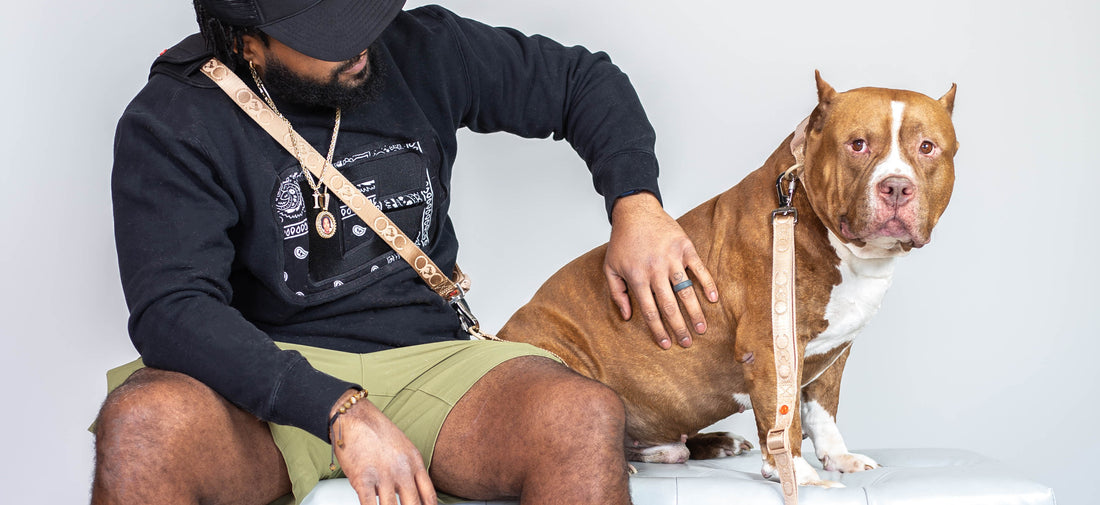
How to choose a leash for your pet
Rae ChenShare
Congratulations on getting a new pet! Or, maybe you aren’t happy with your current leash and trying to retire your old leash. Let’s help you choose the best leash for you. Leashes are the essential item that your pet needs, and there are so many choices you can pick from. However, not every pet leash is made the same. With so many choices out there, how do you pick? No worries! We will help you.
First step
Choose your material. There are nylon, leather, rope, chain, hemp or biothane for your pet leash. Each material has its pros and cons. There are so many materials to choose from, but we picked the 3 most popular choices for consumers.
| Leash material | Pros | Cons |
| Leather |
|
|
| Biothane |
|
|
| Nylon |
|
|
Leather leashes are just like your leather bag; it requires high maintenance but if you maintain it well, it can last a very long time. However, it’s hard to clean when it’s dirty; if you don’t maintain it, it might get dry and damaged.
Biothane leashes have become popular. They’re completely waterproof and easy to clean, but they can become slippery when wet.
Nylon will be the most common leash out there. It’s lightweight and easy to use and wash. However, it can absorb moisture when it gets wet and becomes heavy. Some nylon leashes in the market can break easily and cause rope burns, so make sure you choose high-quality nylon.
Second step
Choose the length and thickness. The standard length is usually 6 ft and it fits most dog breeds and most uses. If you live in the city, a 4 ft leash is a good length for your pet. It has enough length that pets can wander a bit and at the same time stay close enough to be in your control. The longer the length, the more freedom your pet has, but we suggest to go with the standard length (6 ft) for your pet’s safety. If you have larger pets, choose 1 inch for your leash’s thickness. If you have smaller pets, choose a half-inch thick leash so it’s not too heavy for your pet. Half an inch less reduces the weight but still gives you enough thickness for durability.
Third step
Choose the function. Are you a single pet walker? Or multiple pet walkers? Do you want to use your leash to train your pet? Or transport them? Maybe you’d like to bike with them. Figure out what kind of function you are looking for so you can pick the one that fits your need. If you want to use a retractable leash, we suggest using a long leash instead because it’s hard to control your pet with a retractable leash. Retractable leashes can be dangerous; they can wrap around your pet’s legs, body, or neck and cause serious injuries.
Last step
Choose the Clasp. This is a small detail that can greatly impact your experience with the leash. It is also something that people tend to overlook.
The most popular clasps are bolt snap clips and trigger snap clasps because they usually have a 360-degree swivel function to provide flexibility. They’re perfect for smaller pets but not the best for stronger pets; the clasps might break when you pull hard on the leash. Another popular clasp is a carabiner. Like the previous two, carabiners are also easy to use and they’re one of the most secure clasps available. However, it doesn’t have the 360-degree swivel function that reduces tangles and they are usually heavier than other clasps. Once you choose the style of clasp you want, the last thing you need to choose is the material of your hardware.
| Clasp material | Pros | Cons |
| Stainless steel |
|
|
| Brass |
|
|
| Zinc Alloy |
|
|
We designed our OPC leash system with premium nylon material and zinc alloy clasps (leash length up to 6 ft.) It’s the perfect combination of user-friendliness, versatility, and durability. The lightweight but durable premium nylon material can be used for training, walks around the park, or hiking outdoors. The zinc alloy trigger snap clasps have a 360-degree swivel function to keep leashes from tangling together, especially if you choose to use 2 or more simultaneously. Lastly, our modular system lets you connect the different pieces available to create the leash that fits your needs anytime. Check out the OPC leash page to learn more!
What is your favorite type of leash? Leave us a comment below!
